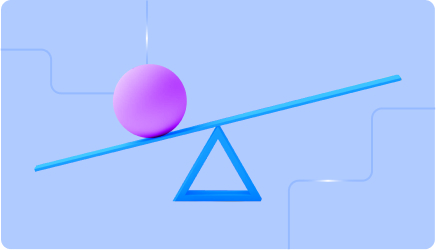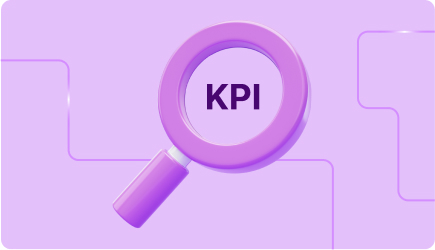
3 Key Metrics for Optimizing Insurance Customer Acquisition

If you work in insurance marketing, then you already know that some customers offer you more value than others.
But while insurance carriers understand that well, they often struggle with optimizing insurance customer acquisition efforts reflect that principle. Given the importance of customer acquisition, it can be easy for them to put a heavy emphasis on policy sales as a metric, without distinguishing effectively between different types of customers.
This can result in missed opportunities, poor allocation of resources, and inefficiency.
With that in mind, this blog post will shed light on three key metrics that are essential for optimizing insurance customer acquisition. By using these KPIs effectively, insurance marketers can make better-informed decisions, improve their profitability, and boost their long-term success.
LTV, CAC, and their ratio
To maximize their revenue, insurance providers need a high customer lifetime value (LTV). This metric refers to the total revenue a customer generates for a company throughout their relationship. It considers factors such as the size of the customer’s premium, their likelihood of renewing policies, and the duration of their relationship with the company.
In addition to LTV, insurance marketers need to pay close attention to customer acquisition cost (CAC). The higher a carrier’s CAC, the more money it spends to acquire an average customer. Of course, even an extremely high CAC can be a worthwhile investment if it’s justified by a sufficiently high LTV.
That makes it important for insurance marketers to strive to maximize the ratio of LTV to CAC. This ratio compares the revenue generated from customers to the cost incurred in acquiring them. A high LTV/CAC ratio indicates that a carrier is acquiring high-value customers at an efficient cost, resulting in a strong ROI.
The benefits of optimizing for a high LTV/CAC ratio
With customer acquisition strategies designed to maximize the ratio of LTV to CAC, insurance providers can unlock several advantages that contribute to their overall success. These benefits include:
- Efficient resource allocation. Prioritizing high-value customers allows insurance providers to allocate marketing resources more efficiently, focusing on segments that have relatively high potential for long-term revenue.
- Improved return on investment. By acquiring customers with a high LTV, insurance providers can achieve a stronger return on investment from their marketing efforts and maximize their profitability.
- Competitive advantage. Insurance marketers who emphasize LTV as a useful KPI can gain a competitive edge by targeting the most valuable customer segments. This strategic approach allows them to outperform competitors who focus excessively on the metric of total policy sales.
In addition, striving to achieve a high LTV/CAC ratio encourages insurance providers to focus on ways of increasing customer retention, such as providing personalized offers and excellent customer service. Satisfied customers are more likely to renew policies, increasing their lifetime value and contributing to optimizing insurance customer acquisition.
The importance of data analysis, segmentation, and predictive modeling
To truly excel in optimizing insurance customer acquisition, it’s essential to collect all sales data and analyze it at a granular level. With that in mind, insurance carriers should include customer segmentation in their acquisition strategy and as part of the data analysis process.
By comparing performance data for various segments, insurance providers can gain valuable insights to help them allocate their marketing resources efficiently. Customer segments should include variables such as location, age, marital status, car details, accident history, credit score, homeownership status, and other factors that indicate the relevance and value of the insurance shopper.
Developing predictive models to estimate the lifetime value of prospective customers in various segments is also crucial. With a strong model in place, insurance marketers can optimize their online bidding strategies, ensuring they bid the right price for each lead at the right time. This approach maximizes the efficiency of bidding strategies and, ultimately, ROI.
Conclusion
Optimizing insurance customer acquisition is a vital for providers aiming to achieve long-term success. Continual adaptation and optimization are essential to stay ahead of the market and keep reaching the most valuable customers over time.
Focusing on the right KPIs—especially customer acquisition cost, customer lifetime value, and the LTV/CAC ratio—can make a significant difference. By segmenting customers effectively, implementing data-driven predictive models, and prioritizing high-value customers, insurance carriers can build a strong foundation for sustained growth and profitability.
Frequently Asked Questions
What are the most important KPIs to keep in mind in order to optimize customer acquisition?
The most important key performance indicators (KPIs) for optimizing customer acquisition in the insurance industry include customer acquisition cost (CAC), customer lifetime value (LTV), and the ratio of LTV to CAC. LTV helps measure the long-term value a customer brings, while CAC assesses the cost of acquiring them. The LTV/CAC ratio is critical, helping insurers understand whether the cost of acquiring a typical customer is justified by the value that customer brings. By increasing its LTV/CAC ratio, an insurer can boost its marketing return on investment (ROI).
How can effective customer segmentation make those KPIs even more useful?
Effective customer segmentation enhances the usefulness of KPIs by providing insights into different customer groups. Segmentation based on variables like location, age, marital status, and more allows insurers to assess KPIs for each segment separately. This enables targeted marketing strategies, efficient allocation of resources, and the ability to identify segments with particularly high (or low) LTV. By tailoring efforts to specific customer groups, insurers can improve their acquisition efficiency.
How can using those KPIs increase insurance providers’ marketing ROI?
Using KPIs like CAC, LTV, and the LTV/CAC ratio can significantly increase marketing ROI for insurance providers. By optimizing customer acquisition strategies to focus on high-LTV customers and efficiently managing acquisition costs, insurers can allocate resources more effectively. This prioritization of high-value customers, along with data-driven decision-making processes, leads to improved efficiency, enhanced customer retention, and a competitive advantage. This way, insurers can use data to boost their ROI.

